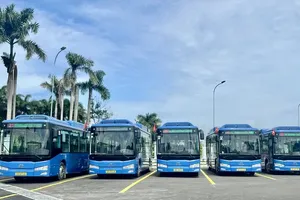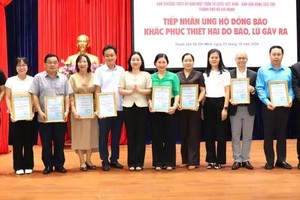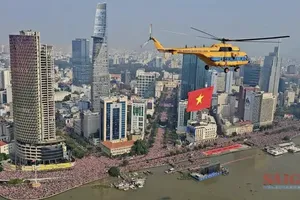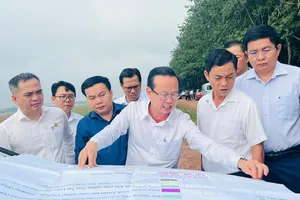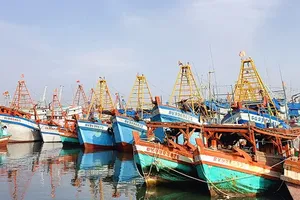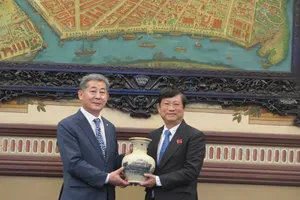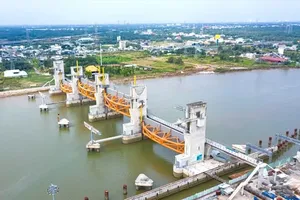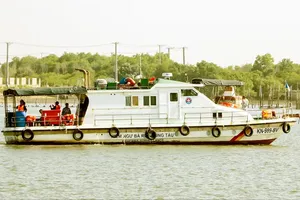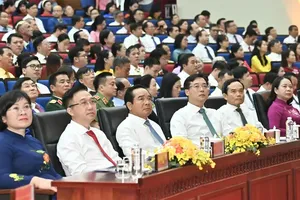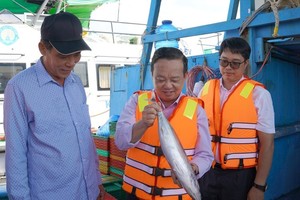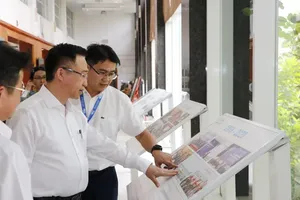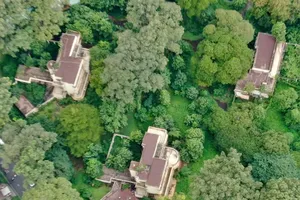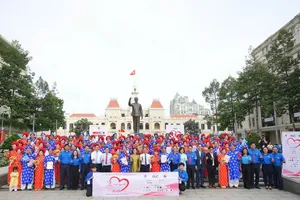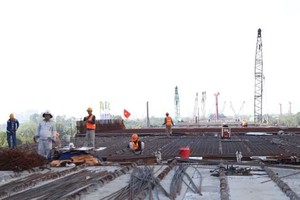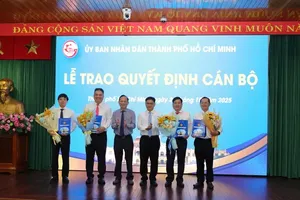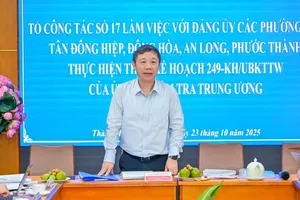The Binh Khanh Wharf in Ho Chi Minh City’s Nha Be District was flooded with reporters and onlookers at 4am on March 7, who hoped to witness the installation process of the first underwater tunnel in Vietnam.
Part of the Saigon East-West Highway Project, the Thu Thiem tunnel will eventually comprise four sections located under the Saigon River connecting the city center near Khanh Hoi Bridge to District 2’s Thu Thiem area.
The chief and crew of four tugboats, consultants and the contractor of the project began work at around 6am with Nguyen Xuan Sang, head of the Maritime Legal Division, spearheading the process. At around 7:30am, HCMC Vice Chairman Nguyen Thanh Tai gave orders for the towing and positioning of the first tunnel section.
The work was overseen by Transportation Minister Ho Nghia Dung, Construction Minister Nguyen Hong Quan, HCMC Chairman Le Hoang Quan, City Party Committee Standing Deputy Secretary Nguyen Van Dua, and other city leaders.
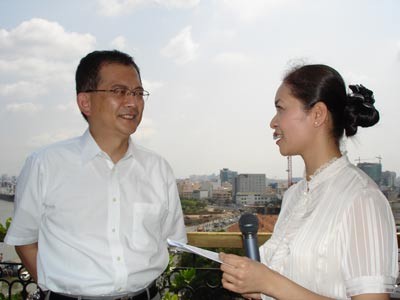
At around 10am, the first section was gradually moved through the Phu My area. Nearly 200 reporters and numerous residents witnessed the process from the Phu My Bridge and riverside, taking photos of the historic event. It took workers until 2pm to finish positioning the first section, which weighs about 27,000 tons.
On March 8, the immersion process began at around 9am.
Chief representative of the Japan International Cooperation Agency (JICA), Tsuno Motonori, said at a March 7 press conference in HCMC that the significant event had been five years in the making. Mr. Motonori said the most difficult work had now begun, but that everything was proceeding smoothly.
JICA, a financial contributor to the Thu Thiem tunnel, has undertaken several other underwater tunnel projects worldwide including ones in Europe and the Middle East. The Thu Thiem tunnel is the first of its kind in Asia.
Project contractor, the Obayashi Corporation, will oversee the tunnel’s maintenance for one year, but the responsibility will later be transferred to Vietnamese contractors.
The Saigon East-West Highway Construction Project was implemented by the HCMC People’s Committee through financial assistance from JICA with official development assistance (ODA) loans of around US$456 million.
Once completed, Thu Thiem tunnel will measure 370.8 meters long. The four tunnel units were first constructed at a casting basin in the southern province of Dong Nai’s Nhon Trach District. Each unit is 92.4 meters long, 33.3 meters wide, and 8.9 meters high. The units are sealed with bulkheads at each end and were towed 20 kilometers upstream to the installation site on the Saigon River.
Nguyen Do, the project’s chief engineer, said that due to the large dimensions of the tunnel sections, it was necessary to prefabricate the units on a suitably large construction site outside the city and then tow them to the installation area.
The installation of each unit is expected to take around one month with the last section scheduled to be installed by June 2010. After the four units have been connected to each other and to the tunnel entrances at both ends, the main roadway and emergency lanes will be paved.
Electrical and mechanical work will then be carried out until the tunnel is ready to open to traffic around mid-2011.
